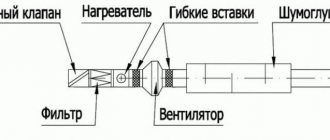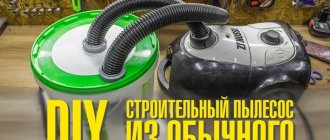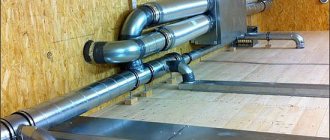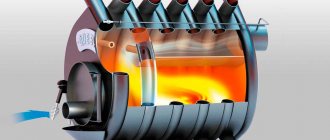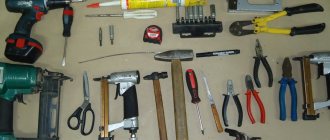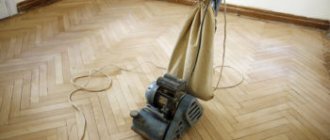It often happens that the air in the house leaves much to be desired. I encountered this while working in the garage. It is located in the basement of the house, it is constantly damp and smells unpleasant, in addition, there is a threat of mold. I had to make an air purifier with my own hands: ready-made options turned out to be too expensive and required regular maintenance. The self-assembled device worked a little worse, but coped with its functions quite well.
Source allstore.com.ua
General Approach to Engineering a Home Purifier
- The housing has slots for the intake of dirty air and the removal of clean air masses.
- Cleansing and ionizing filter.
- A dust collector consisting of installed electrodes with oppositely polar charges.
- Electronic controls for automatic control.
- Power supply to start the device.
Principle of operation
The corona charge created on the electrode produces charged ions. As they move, they capture dust particles and bacteria. When such ions settle on the electrode, they “stick” harmful components of the air with them. Clean air is supplied back into the room. A simple operating algorithm allows you to use the device in any type of room. It is suitable for small rooms whose area does not exceed 20 m2.
Popular models
The following installations have proven themselves to be the best in the fight against harmful smoke.
MCK75JVM-K from Daikin
This unit performs five-stage air purification:
- catechin - retains pet hair and large dust particles;
- plasma ionizer;
- electrostatic filter - breaks down formaldehyde, as well as tobacco smoke molecules;
- pleated filter - absorbs and then decomposes bacteria, as well as viruses and other toxic components passed through the other three filters;
- deodorizing catalyst - produces final splitting of air before returning oxygen to the living space.
The device has a silent operation mode. The purifier easily copes with its main tasks, which is especially important if there are smokers in the house.
Technical specifications:
- air mass flow – 450 m3/h;
- suitable for rooms up to 46 m2;
- weight – 11 kg.
These models have one drawback - they cannot be called cheap. The cost of installation in stores starts from 45 thousand rubles.
Panasonic F-VXF70
A good air purifier model that does an excellent job of removing cigarette smoke. The cleaning system includes water, deodorizing, and combined filters. This model effectively neutralizes strong odors and smoke, destroys harmful microorganisms, and also additionally humidifies the air.
Technical specifications:
- air mass flow - 400 m3/h;
- area – up to 52 m2;
- weight – 10 kg.
Boneco 2055D
Quiet, compact, but at the same time high-quality water filter from the budget segment. It is highly effective in controlling cigarette smoke and strong odors. The general purification of air from other dangerous microelements is also excellent.
Technical specifications:
- water consumption – 250 ml/hour;
- optimal for rooms within 50 sq. m;
- weight – 6 kg;
- capacity – 7 l.
: List of materials used
Details:
- Acrylic sheet 3 mm or plywood 3 mm
- 12 extended nuts M3 30mm
- 24 M3 16mm ball head bolts
- 8 protective grilles for 120mm PC coolers
- 32 screws M5
- 3 small clamps
Electronics:
- 8 120 mm PC coolers – high-quality and inexpensive
- Power supply 12V 3A
- Integral stabilizer 7805 5V
- TIP122 transistor - even better if you have an N-channel FET
- Schottky diode – ideally with high capacitance, low voltage drop and minimal response time
- Microcontroller PIC16F88 or Arduino
- 2 10K resistors
- 10K potentiometer
- 5mm green diode
- 2 ceramic capacitors 100 nF
- 10uF electrolytic capacitor
- 100uF electrolytic capacitor
Tools:
- Laser cutter or circular saw and drill
- Programmer PICkit 3 or Arduino
- Soldering iron
Proper ventilation of smoking rooms
The main mistake of everyone who independently tries to create smoking rooms in restaurants, hotels, and offices is to equip the premises with a powerful hood, completely forgetting about sufficient air flow. The strong vacuum created by exhaust devices makes a person’s stay in the smoking room uncomfortable.
Based on existing standards, during intensive smoking, the room should be supplied with 70 to 140 m 3 /h of fresh air per person. That is why mechanical supply and exhaust ventilation must be installed in smoking rooms. To prevent the flow of contaminated air mixture into clean rooms, it is necessary to create a reduced pressure in the smoking room in the range of 5 to 10 Pa in relation to adjacent rooms.
The most competent solution is to install a hood for the smoking room, the performance of which will be 10-15% higher than the inflow. Supply air in the required volume is best supplied through grates in the floor.
This ventilation system works like this: while tobacco smoke has a higher temperature than the air in the smoking room, it rises. Next comes the zone of “temperature equilibrium” and tobacco smoke hangs in the air. Supply air masses supplied at a speed of 0.5 - 0.7 m/s through grilles installed in the lower part of the room will evenly displace smoke from the room through exhaust holes located in the ceiling of the smoking room.
Drawing up a project and accurately calculating ventilation in a smoking room requires specific knowledge and experience. That is why it is necessary to trust the creation of a competent ventilation system in such premises only to professionals. Video about assembling smoking rooms:
: Assembly
Coolers need to be fixed on the two large sides of the case, and on one sheet the coolers should be directed outward, and on the other - inward. This is necessary so that the air flow passes through the filter. On which sheet where they will be directed does not matter, the main thing is that all four on the sheet look in the same direction.
After making sure that the cooler wires are positioned correctly, you can secure two opposite corners of all coolers. In the other two holes we will attach protective grilles from the coolers from the outside.
Once all the coolers are secured, gather all the wires together and secure them with cable ties. If the wires are in the winding, remove it. You and I are only interested in red and black wires - all red ones should be with red ones, and black ones with black ones, wires of other colors can simply be cut off.
I screwed 12 M3 bolts onto one side and screwed the extended nuts onto them. Once all the coolers are in place, you can begin installing the electronics.
Rules for using the device
- The device should not be too noisy; loud noise indicates difficulties with the air supply (the engine “chokes” and begins to operate at high speeds). This may also indicate an unsuccessful fastening of the fan itself.
- The filtration media must be changed periodically; Don't forget about it! A homemade filter will not be able to personally remind you of this procedure! It is recommended to set a notification on your mobile phone about the date for replacing the filter media.
- Try not to leave homemade air purification devices unattended. Any electrical appliance (especially a homemade one) requires special vigilance and care when operating it and, if possible, should not be left unattended. As for homemade air purifiers, they must be supervised throughout the entire period of their operation.
Non-uniform electric field
heterogeneous
Corona discharge
- in a small area close to the wire electrode, the electric field strength can reach high values (significantly exceeding 30 kV/cm), sufficient for the occurrence of intense ionization processes in the air;
- At the same time, in most of the interelectrode space the electric field strength will take low values - less than 10 kV/cm.
corona discharge with corona electrode
ionization zone (or discharge cover) drift zone
corona current avalanche streamer
Experiment
| U, kV | I, µA |
| 5.5 | 1 |
| 6 | 3 |
| 7 | 10 |
| 8 | 20 |
| 9 | 35 |
| 10 | 60 |
| 11 | 150 |
| 12 | 300 |
| 12.9 | 410 |
| 13 | overlap |
- geometric parameters of the interelectrode space: geometric parameters of the corona electrode;
- interelectrode distance;
- chemical composition;
Useful tips
Experts recommend paying attention to the following aspects:
- Before making your own purifier, be sure to check the humidity level in the room. A hygrometer is used for this.
- Choose the power of the ventilated appliance correctly. To serve a space of 20 sq. m is enough 5-15 watts.
- Change water and moisture absorbers frequently.
- Use exclusively purified or distilled water.
- If the air in the apartment is too dry, additionally use other methods of humidification - leave water in containers open, evaporate the liquid, install an aquarium with fish or an artificial fountain.
- In case of high humidity, turn on floor or table fans, and open windows in dry weather. Turn on heating appliances.
Electric air purification: operating principle
Charging particles
charging Diffusion charging Charging processes
- the ability of a particle to charge (charging speed and the maximum charge beyond which the particle cannot charge);
- time allotted for the charging process;
- electrical parameters of the region in which the particle is located [1,4] (electric field strength, concentration and mobility of ions)
Drift and particle deposition
- electrostatic forces of attraction due to the presence of a charge on the particle;
- molecular forces;
- forces due to capillary effects (in the presence of a sufficient amount of liquid and the ability of the particle and electrode to be wetted).
- production of positive ions to charge particles;
- providing an electric field for the directed drift of ions (necessary for charging particles) and for the directional drift of charged particles to the precipitation electrode (necessary for particle deposition).
- high quantitative concentration of pollutant particles; leads to a deficiency of ions [2,3] (most of them are deposited on particles), as a result of which the intensity of corona decreases, until it stops (the phenomenon is called corona locking), deterioration of the parameters of the electric field in the gap [1]; this leads to a decrease in the efficiency of the charging process;
- accumulation of a layer of dust on the collecting electrode: if the layer has high electrical resistance, then an electric charge of the same sign as the charge of drifting particles (and the polarity of the corona electrode) accumulates in it, resulting in: the intensity of the corona discharge decreases [2,3] ( due to the deformation of the electric field in the gap), which negatively affects the process of particle charging and the process of particle drift to the collecting electrode;
- the charged layer has a repulsive effect on the deposited particle [2], which has a charge of the same sign, which negatively affects the deposition process;
Smoking hoods - getting rid of tobacco smoke
There is no point in talking about the dangers of smoking: all tobacco smoke lovers know very well that smoking kills, and they do not respond to loud calls to give up this harmful habit. Non-smokers, in general, are not interested in stories about the dangers of nicotine.
In our country, after the passage of the law banning smoking in crowded places, the bulk of smokers moved to the balconies and kitchens of their own apartments, poisoning their households.
Owners of cafes, restaurants and hotels, in order not to lose smoking customers, began to equip smoking rooms, the ventilation of which theoretically reduces the risk of cigarette smoke spreading to other rooms. The purpose of this article is to consider ways to reduce the impact of tobacco smoke on non-smokers using specialized equipment and a well-organized ventilation system.
Frame
The fan is mounted inside the housing, which is made of laser-cut 5 mm plywood. Since the fan itself is heavy, and a strong base is needed to attach the filter, the lower part of the housing is reinforced with wooden elements. They were cut the same length, but did not fit perfectly tightly. I used wood putty to fill the voids and seal the system.
Outlet
Since I used foam material to dampen fan vibrations, it was difficult to immediately determine the location of the outlet. I cut it myself using a drill. Not very carefully, but it won't be visible.
Fan mount
Foam material was used wherever the fan came into contact with anything to insulate the noise. Given the heaviness of the fan, it had to be mounted on two surfaces. A laser cut frame will be used for the exit hole. The bolts come out. I did it this way because I made a noise isolator for the outlet and the bolts sticking out will help in securing it.
Housing sealing
To ensure that the low pressure chamber was filled with air only through the filter, I used wood putty to seal it. The electrical outlet is another weak point. I drilled a hole smaller than the diameter needed for the wire, and enlarged it a little with a needle file. This made everything more accurate.
Electrical box
I glued the electrical box to the back of the case. Since the fan is not adjustable, I installed a simple two-position switch. To allow air circulation in case of overheating, I drilled several holes in the sides of the box, which is not the best option.
Features and benefits
What are the dangers of dry air in an apartment? Insufficient humidity means that dust does not settle, but remains in the air. Dust contains harmful bacteria, mites and microorganisms, so a person may develop allergies or asthma. The nasal cavity serves as a protective barrier against bacteria that linger on the nasal mucosa and leave naturally. Thus, if the nasal cavity is dry, this makes it easier for bacteria to enter the body. Sufficient humidity in the room allows you to maintain the correct condition of the nasal mucosa.
To maintain an optimal level of humidity, there is a special humidifier - a small device that has a simple design and is easy to use. In winter, when heating systems are operating, a humidifier is simply necessary in the room. It can have a beneficial effect not only on the health of the respiratory system, but also improves the general condition of the body, has a beneficial effect on the condition of the skin, and gives a feeling of vigor and lightness.
There are benefits from a humidifier for both plants and pets, while the pet will be healthy and active, and indoor plants will become strong and strong. Perhaps the only disadvantage of an air humidifier is its price. However, this device can be made independently from readily available materials.
: Proprietary microcontroller program
The program is created by Flowcode and is very simple. We read the analog voltage from the analog pin connected to the variable resistor and convert it to a digital value.
- Firmware.zip
This value corresponds to the duty cycle for the output of the pulse width modulator, which provides a signal to the driver of the control transistor. You need to add a small delay and a loop and this stage is complete. Configuration parameters for the PIC16F88 microcontroller are shown in the photo, built-in oscillator, internal MCLR, watchdog timer - turn ON.
If you have an Arduino microcontroller, then everything is even simpler - the network is full of instructions for them, download and proceed. Make sure that the signals are connected to their outputs: 1 – to analog, 2 – to PWM.
Humidity control
How to solve the problem with humidity control? Factory dehumidifiers are equipped with built-in sensors to control air temperature and humidity. But what about a homemade device? You can use a thermometer, but it is not necessary and will not tell you anything about the humidity level.
Use a hygrometer. It can be arrow or digital. You can buy it in many specialty stores. In addition, such a device is often included in the design of some modern watch models.
A hygrometer will help you control indoor air humidity
When using a homemade dehumidifier, do not forget that too dry air can be harmful. After all, in addition to pathogenic organisms, there are also beneficial bacteria around us that also need moisture. A hygrometer will help you determine if you need to use a dehumidifier. If the humidity in the apartment has reached a critical 80%, at which mold and fungi begin to actively multiply, feel free to turn on the device
Pay attention to weather conditions: in some cases it may be necessary to use a humidifier rather than a dehumidifier
As you can see, you can easily make a dehumidifier yourself. This solves another problem - using an old refrigerator, which is a pity to throw away and has nowhere to put it. Share with us your experience in dehumidifying the air in your apartment. Easy work for you and comfort for your home!
Why do you need air purification?
Which air purifier to choose for an apartment? Types and characteristics
An air purifier should be small-sized, presentable, easy to clean.
First of all, air purification is the removal of dust from it. But it is impossible to completely get rid of it; it is omnipresent. Its composition is also impressive. Particle size – fractions of a micron. In percentage terms, it will be divided approximately like this:
- 33% – mineral particles of salt, sugar, food crumbs;
- 20% – human skin flakes, particles of nails, ticks, cockroaches;
- 13% – paper and fabric fibers;
- 6% – plant particles, pollen, fungal spores;
- 4% – cosmic dust, ash.
What is the harm of dust? Firstly, its appearance is simply not aesthetic and, moreover, unhygienic. When mixed with moisture, it turns into mud, where fungal spores, mites, other insects and microorganisms develop. Secondly, hovering in the air of the apartment, it creates the impression of a “burnt” smell. This is a situation where they say “there is a smell of dust in the air.” In such a “heavy” atmosphere, headaches, sneezing, and coughing appear. Thirdly, dust in the air contributes to the development of allergic and pulmonary diseases.
Briefly about the main thing
An air purifier is an extremely useful device. Unfortunately, the air in cities leaves much to be desired; it is full of harmful substances and microorganisms, and contains dust and allergens.
To improve the microclimate in your home, you should use an air purifier. You can buy it, but it’s easy to make it yourself. A simple device will help improve the air, remove major contaminants and refresh it.
Question
Write in the comments if you have ever used an air purifier? Which do you think is better - a regular water filter or a carbon filter?
Humidifiers made from PET bottles
To make such a humidifier, you only need a plastic bottle and a bandage. The bottle can be hung in an inconspicuous place on the radiator or supply pipe.
To do this, it is tied or glued with tape in a horizontal position. A small slot is made in the side wall of the bottle. The lid closes tightly and water is drawn in.
The bandage is folded several times, and its middle is lowered into the slot of the bottle, and the edges are wrapped around the heating pipe. Water will be absorbed into the bandage and rise up, and the hot battery will promote evaporation.
To ensure that the air in the apartment is not excessively dry, especially in winter, it is necessary to humidify it. It is not necessary to buy the unit in a store. How to make an air humidifier with your own hands - you will find different design options in the article.
We will discuss the main criteria for choosing a humidifier for the home here.
Many parents doubt whether a child needs a humidifier at all? Follow the link to find the answer to this question and learn how to choose the right device.
Ultrasonic
It is more difficult to make an ultrasonic air humidifier with your own hands than the previous ones, but it is several times more efficient than them. To make the device you need to get some accessories:
- a ring from a children's toy pyramid (you can use a piece of foam plastic with a hole cut out instead);
- corrugated tube with a diameter of about 2–4 cm;
- ultrasonic steam generator;
- a plastic bucket with a tight-fitting lid with a volume of 5–10 liters;
- disposable plastic cup;
- computer cooler;
- power supply converter.
The procedure for making a homemade ultrasonic air humidifier:
- Make several holes in the lid of the bucket for routing the steam generator cord, corrugated tube and fan mount.
- Attach the cooler and tube to the lid on different sides.
- Make a hole in the bottom of the cup, and stretch a piece of cotton fabric around the outside; this will be a water filter.
- Place the steam generator in the glass and cover it tightly with the pyramid ring. Pass the wire from it through the hole in the ring.
- Connect the power supply converter to the steam generator and cooler.
- Pour water into the bucket, lower the glass and close the lid tightly. It is better to use purified water to prevent white deposits from appearing on surrounding objects.
This DIY ultrasonic air humidifier produces water vapor that comes out through a tube using a cooler. A pyramid ring or a piece of foam acts as a float, holding the steam generator at the desired level.
As you can see, there are many ways to humidify the air in a living room without resorting to purchasing an expensive device. Any owner can make an air humidifier at home with his own hands.
How to humidify the air in your home
The winter season is marked by the start of the period when heating systems are turned on.
At this time of year, the cold air in the apartment, warming up to a certain temperature, loses humidity to a critical level. The standard relative humidity for residential premises is defined within the range from 40 to 60%. It is necessary to adhere to these limits at any time of the year to maintain health. This is especially important if children live in the house: their immune system has not yet fully developed, so polluted dry air can cause serious illnesses.
In apartments with dry air, you need to regularly evaporate a certain volume of water. The best way to do this may be to use special devices - an air cleaner or a humidifier. If such devices are not at hand, then you can humidify the house using other methods.
Air humidification using traditional methods
How is a humidifier useful? It provides an optimal level of moisture in the room. However, this can be done using other methods listed below. Choose one or two convenient methods. It is not recommended to apply everything at once, because this way you risk making the room damp.
- If possible, do not close the door to the bathroom , especially after water procedures. If the door to the bathroom is closed only when bathing, then moisture enters the apartment, increasing the humidity level. If you often take a bath, then after the procedure do not rush to flush the hot water. Let it remain for a short time: as it cools, the water in the bath evaporates and also humidifies the atmosphere.
- Dry washed items and towels indoors . This is also the simplest option that does not require the use of any additional means. Dry clothes and towels next to (and if the operating instructions allow, then on them) with heating appliances or systems: they will dry faster and at the same time release a large amount of moisture. At the same time, be careful: no traces of cleaning products should remain on things. Otherwise, you risk inhaling harmful fumes.
- Evaporate the water . Place any container suitable for boiling on the stove. To do this, you need to boil water and place the container on a table or windowsill so that the vapor fills the room. There is another way: boil water and, reducing the heat to low, leave the container on the stove for prolonged evaporation. This can be done every time you cook to prevent the air in the kitchen from becoming too dry. It is also recommended to dissolve a few drops of eucalyptus or tea tree oil in water. Their aroma is soothing, and the vapors of these oils destroy various microorganisms and prevent the spread of viral infections, and the pleasant aroma uplifts and calms. In addition, the water can be flavored with cinnamon sticks and other aromatic herbs or spices. By the way, many people are interested in whether it is possible to add essential oils to an air humidifier. This is acceptable, but after evaporation it is recommended to thoroughly rinse the device.
- Place containers of water in all rooms . To do this, fill any container with water. You can decorate it beautifully so that it looks more organic in the interior, and leave it near the heaters. The water from the container gradually evaporates and humidifies the room. It is necessary to regularly change the water and rinse the containers so that harmful contaminants do not accumulate in them.
- Grow house plants . Indoor plants significantly improve the microclimate of the apartment. They perfectly moisturize, ionize, clean and disinfect the atmosphere in the room. Nephrolepis (house fern), Fatsia, Cyperus, Sparmania (indoor linden), ficus, dracaena, and hibiscus produce the greatest amount of moisture.
If there is insufficient humidity, people feel worse: the throat becomes dry and the skin becomes dry, a cough and symptoms of a runny nose appear.
- Buy an aquarium or build a small fountain . These decorative components of the premises also emit a sufficient amount of moisture to humidify the premises. In addition, an aquarium and a working fountain calm the nervous system and create a positive atmosphere.
- Regularly ventilate the premises and wet clean them . It is necessary to ventilate the apartment 2-3 times a day, even in winter. This way you can maintain the optimal level of humidity in the rooms. There is no need to talk about wet cleaning of the apartment - this is a necessary procedure.
What moisturizing structures can you make yourself:
Water reservoirs.
You can place containers of water everywhere, it will slowly but surely evaporate. You just need to remember to add water regularly. At first, while the air is very dry, evaporation occurs faster, then the process will drag on more and more. In most cases this method is not enough.
A wet towel is applied to a hot radiator or fan.
If you have taken such measures, the water will evaporate faster, especially in the case of a battery. After all, it will heat up, so water will enter the surrounding air in the form of steam faster. Naturally, when the towel dries, it must be moistened again.
Water container on the battery.
This option is less troublesome than the previous one: you will need to add water to the container every few days. This method can be improved very simply: you need to dip one end of a rag in water and hang the other on the battery. Instead of a rag, sometimes they take a bandage, after folding it several times.
Another option: make something like a cup with a tail out of a tin can or plastic bottle. Using the tail, we attach the product to the battery. The result was an almost stationary homemade humidifier.
Or you can wrap the fabric around the pipe that leads to the battery, and lower its middle into the slot of a plastic bottle, which, in turn, is carefully hung on the same pipe, filling with water.
Electric humidifier.
Craftsmen usually take a fan from a computer, and the system unit itself will help. Screw the cooler (fan) onto the top wall of the box, connect the wires to a phone charger or power supply, you can choose one with a regulator. If everything works, turn on the device so that air comes out of the box, picking up droplets of water, spreading them around the room. We recommend using non-woven material as an evaporating material.
Instead of a system unit, you can take a large container, the main thing is that it is sealed.
Decorative humidifier.
You will need the following things: a decorative container (for example, a wicker plate), a container for water, pebbles for decoration, sand, glue.
Place the one prepared for water in a decorative container, and place stones around it for beauty. You can glue some of the pebbles onto the sides of this masterpiece using previously prepared glue. It is better to make sure that the sides are not visible, if you lay out the stones in a continuous pattern. Sprinkle sand, some of it can also be placed on glue. Don't forget to wait for the glue to dry.
Any device where there is air movement is suitable. The air stream should come from above, above the surface of the water.
Ultrasonic humidifier.
We propose to make a so-called cold humidifier, the basis of which is the piezoelectric effect. What does it mean? Under the influence of compression and pressure, an energy potential arises in some crystals (it is also called electric). If voltage is applied to such a special crystal, it vibrates at a frequency of 20 kHz. At the same time, water molecules actively begin to leave the liquid. It produces steam without heating.
The only difficulty in this method of making a humidifier for your home with your own hands is to obtain this piezo crystal. And then supply ultrasound from the usual output (audio on a music center, for example) and the device works.
Humidifier from a box.
Take a spacious plastic box with a lid (these are now sold in any shape and size in supermarkets, for example), preferably on wheels, a small fan, a power supply, a soldering iron, a knife, a drill. In the tray on the sides and in the middle, cut holes with the heated end of the soldering iron so that there is 3 cm between them. Make a hole in the lid of the box, but larger, insert and secure the fan there. Connect the power supply (a unit with a stabilized voltage of 12 V is recommended) and insulate the wires.
If you pour nine liters of water into such a box and place it in an average room (size 17 m2), in which the initial humidity is 40%, then overnight the humidity level will rise to 58%. Thus, regulate a pleasant and healthy humidity level that is comfortable for you and keep the humidity at the same level constantly. Buy, find in the pantry another box with a side length of 50 cm, an enlarged fan (not a computer cooler), do not forget about the matching voltage and buy a power supply according to the power and size of the fan.
Types of carbon filters for kitchen hoods
Fine filters for exhaust devices purify the air from steam, small impurities and odors. Such an element is located inside the unit body immediately behind the grease trap.
The filter is called a carbon filter because the filling of the filter cassette consists of powder or granules of activated carbon or it contains fabric soaked in carbon solution. Such an element is used in a hood operating in recirculation mode, installed in rooms where natural ventilation is faulty or absent.
The shape of the carbon cassette can be round, convex, rectangular, flat, in the form of an even cartridge, etc. The body is made of plastic with a mesh side, behind which there is a filtering component of the structure (carbon filler).
All deep cleaning filters are disposable. The service life depends on the frequency and intensity of use of the hood. If you do not change the filter in time, the quality of air purification will decrease.
Modern exhaust units are equipped with an indication system. The sensor shows the degree of filter contamination and, using sound or color, notifies the owner about the need to replace it.
Different types of coal are used to make carbon filters:
- peat;
- stone;
- impregnated;
- coconut.
According to their intended purpose, carbon filters are used in different areas. In addition to household ones, there are also industrial elements that are much larger and heavier than the first ones and are intended for air purification in catering shops and other large premises. Coal elements are also used in wastewater treatment plants. For this reason, models differ in size, weight and shape.
In everyday life, carbon filters are used in recirculation or combined type hoods.
What types of dust collectors are there for the home and how are they useful? Instructions + Photos and
Even with frequent use of a vacuum cleaner and regular wet cleaning of the apartment, it is almost impossible to completely cope with dust. Its particles settle tightly on furniture, appliances, pillows and soft toys. In order to get rid of dust as much as possible, a new device has appeared on the market - a dust collector for the home.
The operating principle of such a device is based on air circulation. At the same time, dust particles entering the dust collector are retained in special filters, and the output is purified air, which saturates the room. Today you can buy such devices in household appliance stores. Their choice is very large and they differ from each other in the method of cleaning.
Types of dust cleaners
The following types of such devices are distinguished:
- Electrostatic. Such models are the most common due to their low cost and excellent price-quality ratio. The air is purified using ionization. When the device is turned on, ionized air begins to move and attract dust particles that have a negative charge. At the same time, the plates of the device itself have an opposite charge, due to which they attract dust and leave them in the filter. This purifier has low power consumption and low noise levels. It also does not require special care; it is enough to remove any remaining dust from the plates with a damp cloth once a week. An additional function of this device is the presence of an ionizer. It is also needed to clean the house from bacteria and viruses and eliminate unpleasant odors.
- Devices with replaceable filters. They are equipped with HEPA filters (the same as some models of vacuum cleaners) that are capable of capturing the smallest dust particles. This device has positive reviews from allergy sufferers and families with children. A significant drawback is the high price of both the device itself and the filters, which need to be changed 1-2 times a year depending on the frequency of use.
ATTENTION! Some devices require a certain number of filter changes before they must be disposed of. Information about this will be indicated in the technical data sheet of the purifier.
Photocatalytic dust collectors are characterized by the highest efficiency, and, as a result, a higher price. The interaction of ultraviolet light and a catalyst allows not only to clean the air of dust, but also to disinfect it. The principle of operation of this type is that UV light, hitting the surface of the catalyst, forms natural substances with a high oxidation capacity. These substances, in turn, are able to decompose any incoming dust and pollution into nanoparticles. They also help fight tobacco smoke and unpleasant odors. Due to the fact that splitting occurs at the molecular level, dust residues do not accumulate anywhere and there is no need to change filters, the air simply becomes purified. The only element that can fail is the ultraviolet lamp. But, as a rule, its service life is very long, from 1 to 3 years. The disadvantage of this type of purifier is the high level of noise and energy consumption.
Some manufacturers combine photocatalytic purifiers with ionizers and electrostatic devices, which increases efficiency but also increases cost.
Air washing. This device is a symbiosis of a purifier and a humidifier. The filter in this case is water. It simultaneously promotes cleansing and moisturizing. Such a device is quite expensive, but it is not very efficient. It is also necessary to regularly change the water in it, otherwise the positive effect of such a purifier will not be achieved at all.
How to choose a dust cleaner
Based on the variety of types of dust collectors, the question arises, which one should you choose?
There are basic criteria that should be followed when choosing a device:
Room area. Each device is designed to clean a certain area, which will be indicated in its characteristics. Therefore, when calculating, it is worth considering whether appliances are needed in each room or whether one is enough to move around the house;
Thus, a home dust collector helps in purifying the air and creating a more comfortable atmosphere in the house.
Homemade dust air purifier with humidification: design No. 3
To implement the task, the following are used:
- volumetric plastic container with a lid;
- 12 V power supply that can be connected to the mains;
- fan of small dimensions;
- filter element.
The design principle is similar to No. 2: a hole is made in the plastic tank for installing a fan and power supply. The fan is firmly fixed in the upper part of the container using bolts to prevent it from sinking into the water. Water is poured into the lower part of the plastic tank. The liquid should not reach the fan by at least 3 cm. This device can be equipped with a relay with which you can automatically control the structure: it will turn on and off independently after a certain time, which, you see, is very convenient.
Price
You can buy an air washer inexpensively at almost any hardware store. The price of the cheapest options is approximately 1,500 rubles . You can also find small USB devices in hypermarkets or order from online stores, which also have a low cost ( from 1000 rubles ).
Air washing - How to choose, main types. Which humidifier is best for a child. Read here.
The price of more advanced models reaches 17,000 rubles . If you make it yourself, the price of all materials will be about 600-1000 rubles .



